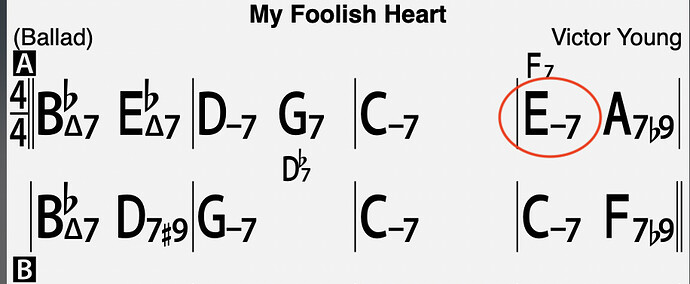Student Question:
How am I supposed to learn all of the possible combinations of upper structure triads?
Hayden’s Answer:
Firstly print off the upper structure cheat sheet. You can download it here:
Upper-Structure-Cheat-Sheet.pdf (949.5 KB)
Instead of counting the possible combinations, once you understand the basic construction and have taken them through a few keys, start applying them to tunes.
That’s the point of the cheat sheet… when you come across a dominant chord on a lead sheet, look what is in the melody and then match it to a chord tone in this column:
You will have to find the inversion of the triad in your right hand, but that is part of the discovery process and by doing this you will retain the shapes and formulas much better because you are taking the time to work it out.
It’s nice to print out the cheat sheet and stick it close to the piano for reference, soon you won’t need to reference it because you know the formulas.
The 4 Most Important Upper Structures
Just with those 4 upper structures, they will have you covered when the melody note over a dominant chord is any of the altered chord tones (b9, #9, #11, #5/b13) any of the upper extensions (9, #11 & 13) also the root, 3, b7 and 9.
Are there more Upper Structures Than These 4?
Yes. There are many, many different upper structure combinations. When you incorporate diminished and augmented triads as the upper structures, you have a potentially endless combination of shapes and sounds.
I rarely deviate away from the 4 formulas printed on the cheat sheet. Learn these first and you will have an ample selection of sounds at your fingertips.
Ask Yourself: Do You Really Need To Play An Upper Structure?
Don’t feel you need to use upper structures on every dominant, this will likely sound too rich.
Just sprinkle them in here and there and mix up with lighter, sparser dominant voicings.
Sometimes the simplest of voicings sound best. And that is the beauty of playing jazz, you have the creative freedom to decide what type of voicing you want to play.
A nice analogy is:
If you were in a restaurant and they served you the richest chocolate cake imaginable, a very small piece would be enough or maybe just a few bites.
The same applies with chord voicings… upper structures are dense, tense, often quite jarring sounding chords. Sure they sound fantastic in places but don’t over do it… Sometimes the nicest thing you could play is just a plain old unaltered dominant chord containing root 3 and b7.
If you had an audience… playing upper structures on every chord of the song would be like a server giving you a huge slab of rich chocolate cake and making you eat it all.
Always remember variety is the key. Upper structures are complex voicings, but that doesn’t mean they sound good on every dominant chord you come across!





 I have printed off your email and will work through it step-by-step. Cheers.
I have printed off your email and will work through it step-by-step. Cheers.